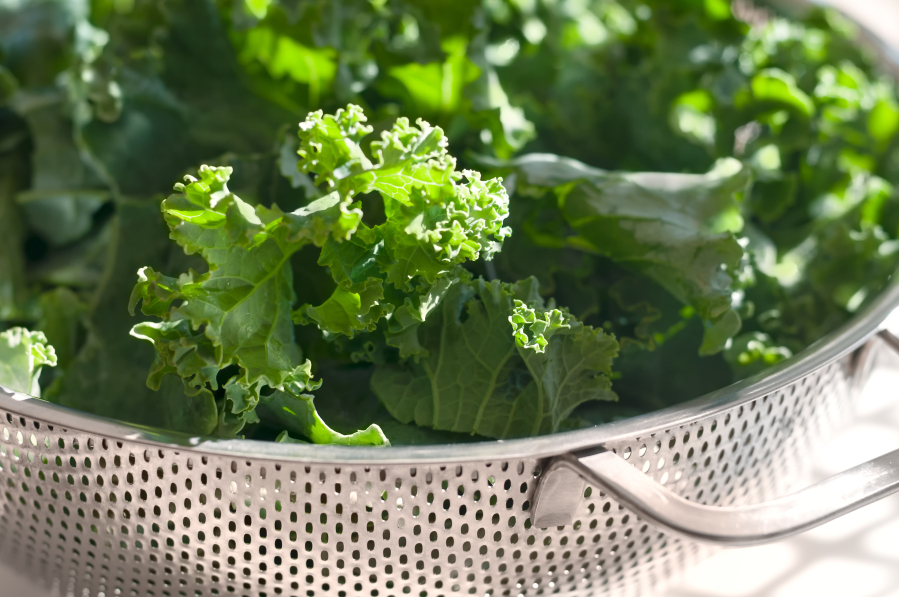What is leafy, green, has more calcium than a cup of milk, is full of omega-3 and has over 100 percent of your daily vitamin A? It’s kale, the superhero of greens!
Kale is a member of the cabbage family and has been a common green since Roman times in Europe. Kale was one of the most common green vegetables until the end of the middle ages. Today all kale varieties are grown throughout the world and can be found year-round.
Just one cup of raw kale has 33 calories, 2.5 grams of fiber, and more than your daily needs of vitamins A, C and K. It’s an excellent source of B vitamins, omega-3 fatty acid and it’s full of minerals including potassium, calcium, and zinc. This superfood has staying power and is one of the most affordable organic vegetable.
Kale comes in a variety of types and flavors. Baby kale greens are sweet and tender, delicious as a salad or used instead of spinach. Varieties of kale are Lacinato, aka Dinosaur or Tuscan, curly leaf and Red Russian. Lacinato is tall and narrow with dark blue-green leaves, which are delicate tasting with an earthy but almost nutty sweetness that is perfect for smoothies, or tofu scrambles.
The favorite kale for making chips, adding to soups or using in recipes is curly leaf or Red Russian. Curly leaf kale is usually green or purple in color with tight ruffled leaves with a peppery, slightly bitter taste.
Red Russian kale has flat, fringed leaves that can have a red tinge. The flavor is sweet and mild with a touch of pepperiness. Ornamental kale is also edible but not as tasty as the other members of the kale family.
When choosing kale, the leaves should be crisp, with a bright color and no yellow leaves. Do not wash kale until you’re ready to use it. Store it in the refrigerator in a plastic bag. Stored properly, raw kale will usually keep for five to seven days — but for best flavor eat within two to three days. It starts to become bitter if stored for too long.
Kale can be eaten fresh, cooked, frozen, canned and dehydrated. To freeze, wash kale well and remove stems, then blanch in boiling water, plunge in ice water, drain and package. Properly prepared, packaged and stored kale will last up to 10 to 12 months or longer if kept frozen at zero degrees. For canning, follow an approved recipe for spinach and other greens.
To prepare mature kale to eat, you must remove the stalk. Take a stalk of kale, hold by the end with one hand while placing your index and middle fingers of your other hand around the stem just above the leaves, pull your fingers along the stem and the leaves come right off.
Make kale chips by removing leaves from stems, tearing the kale into bite-sized pieces, drizzling them with olive oil and a dash of salt, and baking for 10 -15 minutes in a 400-degree oven.
For additional kale recipes and serving suggestions, check out Chef Scotty’s Market Fresh Recipes at ext100.wsu.edu/clark/?p=8163.
Vicki Ivy is a WSU Clark County Extension Master Food Preserver. For additional recipes, food preservation and food safety information visit http://ext100.wsu.edu/clark/?p=1134. Have questions? Call MFP Helpline: 360-397-6060 ext. 5366, or join Facebook Discussion Group “WSU Home Food Preservers – Clark County.”



